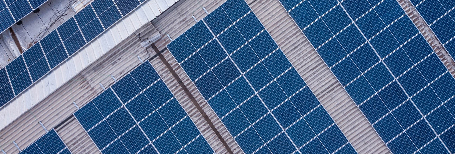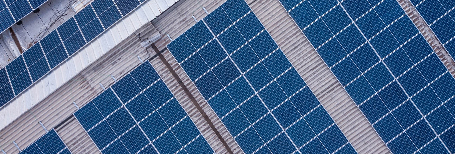
with the vigorous development of the photovoltaic industry, photovoltaic modules are the core components of photovoltaic power plants. due to the large number of auxiliary materials in the modules, the defects of the auxiliary materials of the modules and the overall problems caused by them may accelerate the aging of the modules, cause the efficiency to drop or fail. therefore, how to ensure the long-term quality and overall performance of auxiliary materials is the key to testing the production level of components. when the module attenuation exceeds expectations, the efficiency of the photovoltaic power plant system will also drop significantly. during the production, transportation, installation and operation of modules, due to uncertain factors such as equipment, technology, materials, management, and personnel, quality problems and hidden dangers may occur in modules. product certification and testing have introduced relevant standards to ensure that the performance of photovoltaic modules can cope with various climatic environments. modules can be fully tested according to standards such as iec 61215 and iec 61730.
noa photovoltaic laboratory can conduct related tests of crystalline silicon photovoltaic modules, thin film photovoltaic modules, and concentrated photovoltaic modules. the testing capabilities cover all mainstream standards at home and abroad. while ensuring sufficient test capacity, for perc, heterojunction and other emerging new technologies, we have corresponding equipment upgrades and technical capabilities upgrades and have successfully completed tests, including iec 61215-2:2021 terrestrial photovoltaic (pv) modules-design qualification and type approval, iec 61701 photovoltaic (pv) modules - salt mist corrosion testing, iec 61730-2:2016 photovoltaic (pv) module safety qualification – part 2: requirements for testing, iec ts 62782-2016 photovoltaic (pv) modules – cyclic (dynamic) mechanical load testing, iec/ts 62804-1:2015 photovoltaic (pv) modules – test methods for the detection of potential-induced degradation – part 1-1: crystalline silicon – delamination, gb/t 9535-1998 crystalline silicon terrestrial photovoltaic(pv) modules-design qualification and type approval, iec61853-1:2011 photovoltaic (pv) module performance testing and energy rating – part 1: irradiance and temperature performance measurements and power rating and other standards, obtained cma, cnas and other relevant qualifications, and can provide effective inspection and test reports.

| iec61215 test content | |||
|
visual inspection |
maximum power determination |
insulation test |
measurement of temperature coefficient |
|
measurement of nominal module operating temperature |
performance at stc |
performance at low irradiance |
outdoor exposure test |
|
hot spot durability test |
uv preconditioning test 15 kwh/m2 |
thermal cycle test tc50/tc200 by sequence |
humidity freeze test hf10 |
|
damp heat test dh1000 |
robustness of terminations test |
wet leakage current test |
mechanical load test |
|
hail test |
bypass diode thermal test |
diode performance test |
stability |
| / |
dry heat conditioning |
cold conditioning |
uv test 15/60 kwh/m2 |
|
robustness of terminations test |
thermal cycling test mst51 is divided into tc50/tc200 in sequence |
humidity freeze test |
damp heat test |
|
static mechanical load test |
peel test |
lap shear strength test |
materials creep test |
|
bypass diode thermal test |
reverse current overload test |
module breakage test |
screw connection test |
|
temperature test |
hot spot endurance test |
fire test |
ignitability test |
|
continuity test of equipotential bonding |
impulse voltage test |
insulation test |
wet leakage current test |
|
durability of markings |
sharp edge test |
bypass diode functionality test |
cut susceptibility test |
|
visual inspection |
performance at stc |
maximum power determination |
insulation thickness test |
| iec61730 test content | |||
1. iec 61215-1-1: 2021 terrestrial photovoltaic (pv) modules - design qualification and type approval - part 1-1: special requirements for testing of crystalline silicon photovoltaic (pv) modules
2. iec 61215-2: 2021 terrestrial photovoltaic (pv) modules - design qualification and type approval - part 2: test procedures
3. iec 61730-1: 2016 photovoltaic (pv) module safety qualification - part 1: requirements for construction
4. iec 61730-2: 2016 photovoltaic (pv) module safety qualification - part 2: requirements for testing
5. gb/t 9535: 1998 crystalline silicon terrestrial photovoltaic(pv) modules-design qualification and type approval
6. iec 60904-1: 2020 photovoltaic devices - part 1: measurement of photovoltaic current-voltage characteristics
7. ul 61730-2: 2017 photovoltaic (pv) module safety qualification - part 2: requirements for testing
8. ul 1703: 2012 standard for flat-plate photovoltaic modules and panels
9. iec ts 62804-1: 2015 photovoltaic (pv) modules - test methods for the detection of potential-induced degradation - part 1: crystalline silicon
10. iec 61853-1: 2011 photovoltaic (pv) module performance testing and energy rating – part 1: irradiance and temperature performance measurements and power rating
11. iec 60068-2-68: 1994 environmental testing - part 2-68: tests - test l: dust and sand
12. iec ts 62782: 2016 photovoltaic (pv) modules - cyclic (dynamic) mechanical load testing
13. other technical requirements of the client
(1) broken, cracked, or torn external surfaces;
(2) bent or misaligned external surfaces, including superstrates, substrates, frames and junction boxes to the extent that the operation of the pv module would be impaired;
(3) bubbles or delaminations forming a continuous path between electric circuit and the edge of the module;
(4) if the mechanical integrity depends on lamination or other means of adhesion, the sum of the area of all bubbles shall not exceed 1% of the total module area;
(5) evidence of any molten or burned encapsulant, backsheet, frontsheet, diode or active pv component;
(6) loss of mechanical integrity to the extent that the installation and operation of the module would be impaired;
(7) cracked/broken cells which can remove more than 10% of the cell's photovoltaic active area from the electrical circuit of the pv module;
(8) voids in, or visible corrosion of any of the layers of the active (live) circuitry of the module extending over more than 10% of any cell;
(9) broken interconnections, joints or terminals;
(10) any short-circuited live parts or exposed live electrical parts;
(11) module markings (label) are no longer attached or the information is unreadable.
(1) light intensity: 1000 w m-2
(2) module temperature: 25±1℃
(3) standard air mass: am1.5






tel: 86-400 821 5138
fax: 86-21 3327 5843
email:noa@noagroup.com